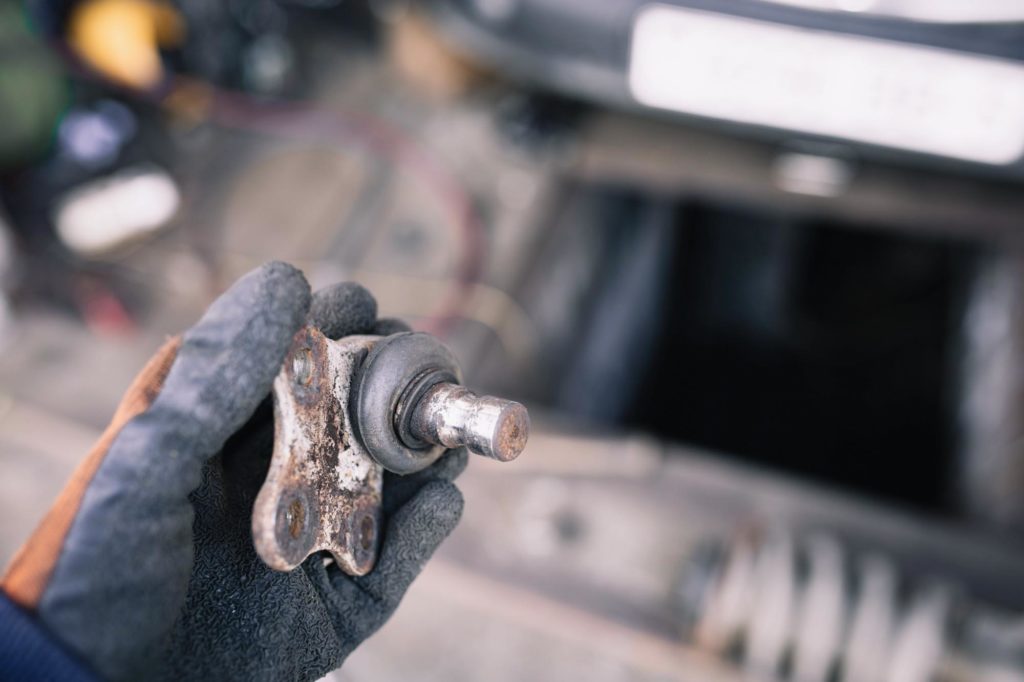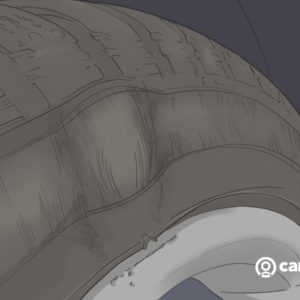New or factory car tires often wear out faster than replacement and aftermarket tires because they’re made of soft rubber material. This makes them more susceptible to wear and tear. That’s usually the reason why new car tires deteriorate quickly, but it’s not the only one.
5 Reasons Why New Car Tires Wear Out Quickly
Aside from their material, the tires of brand-new cars might wear out quickly due to the following issues:
Underinflated or Overinflated Tires
If tires don’t have enough air, their tread flexes abnormally as they rotate, which causes excessive friction and wears them out faster. The friction can also overheat the tires, resulting in tread separation and tire blowouts. Meanwhile, overinflated tires will wear the tread out in the center.
Tire pressure monitor systems (TPMS) became mandatory in 2007, so check your tire pressure if that system sounds a warning or illuminates a tire light.
Overinflated tires will wear the tread out in the center.
–Richard McCuistian, ASE Certified Master Automobile Technician
Misaligned Toe or Camber
Toe refers to the parallelism of the wheels to each other, while camber refers to the tire angle with respect to a perfectly flat road. If they’re misaligned, they often cause uneven tire wear. On a new car, this will only be an issue if the vehicle wasn’t properly aligned on the assembly line.
Toe misalignment usually creates a feathered wear pattern across both front tires and the inner shoulder wear on both tires. On the other hand, camber misalignment usually produces uneven tire wear on one side of the tire tread. But again, unless you’ve hit a pothole or curb and knocked the front end out of line, this won’t be a problem on a new car.

Bad Driving Habits
Hard cornering, standing on the brakes, and other aggressive driving habits can cause tire wear, usually due to uneven friction and weight distribution.
For example, if you take a corner too quickly, you’ll put too much pressure on your tires. The force wears away at their tread, and if you do it often, you might notice rounding on the tire’s shoulders when you look at it straight on.
These habits can accelerate tire wear on a new car, so think about the tires while you’re driving a new car.
Tire Quality
Tires with high tread wear ratings (over 300 or 400) last longer than tires with low tread wear ratings (200 or less). Some new cars have tires with low tread wear grade.
Can Worn Ball Joints Cause New Tires to Wear Out Faster?
A bad ball joint can cause uneven tire wear because they affect the wheels’ alignment. The inner and outer edges of the tires will wear out faster than their other surfaces due to the misalignment.
Of course, new cars shouldn’t have worn ball joints, so that won’t be the reason new car tires wear out. Also, ball joints don’t typically cause tire wear unless they’re dreadfully worn to the point of falling apart.

Can You Drive With Worn-Out Tires?
You can drive with worn-out tires, but it’s not advisable because they increase the risk of accidents. Worn tires reduce braking efficiency, which can make driving on wet roads risky. On top of that, low-tread tires are also vulnerable to blowouts.
How Long Do Tires Usually Last?
All-terrain tires typically last from 40,000 to 70,000 miles. But manufacturers are careful not to give a specific mileage claim because various factors can affect tire lifespan. The tread wear rating on a tire’s sidewall provides a relative index rating of tread life in comparison to other tires.
Why Are Getting Good Tires Important?
Tires absorb shock when driving over uneven surfaces and provide traction between the wheels and the road. The part that connects to the ground is called tread, and it’s essential in braking.
Tread depth is usually around 11/32 in. deep on new tires, but that could be between 9/32 in. and 15.32 in. depending on the manufacturer. If the tread is worn-out, it can’t provide enough traction for braking, which increases the vehicle’s stopping distance.
What to Consider When Buying Tires
Don’t base your tire choice on looks alone. Keep the following factors in mind to get the best tire replacements for your ride:
Type
When in doubt, pick the same type of tire that your vehicle came with. But if you want to try something different, like all-season tires or touring tires, make sure you research them well before buying anything.
Size
Make sure to buy the same size as the original one. Tire size is critical for vehicle handling, and it affects your ride’s brake effectiveness, headlight aiming, vehicle height, acceleration potential, and speedometer calibration.
Speed Rating
Get tires that have the same speed rating as your original tires. If you install tires that are incompatible with your ride, you might have trouble with cornering and handling.

How to Maximize Your Tire’s Service Life
Make the most of your tire’s service life by following these practices.
Check the Tire Pressure
Make sure the tire pressure stays at the right range. It should be between 32 and 36 PSI, but this value may vary depending on the vehicle. This pressure range keeps the tires firm enough to support the weight of your vehicle while avoiding straining the tire’s materials.
Inspect Tire Components
Check the parts that are crucial for wheel alignment, like the ball joints, regularly. If your ball joints have built-in wear indicators, you can check joint play with the weight of the vehicle on the wheels. But if they don’t, you might have to raise the suspension to check.
You can also take your ride to an auto repair shop to have its wheel alignment checked.
Check the TPMS
The tire pressure monitoring system (TPMS) has an indicator on the dashboard that lights up when a tire has low pressure.
Underinflated tires usually have a smaller radius compared to tires that are properly inflated. The wheel speed sensor will detect a difference if the inflation pressure is 12 PSI or more. It will then alert the ABS (anti-lock braking system) controller to turn on the low tire pressure warning lamp.
An indirect tire pressure monitoring system also checks the rotating speed of diagonally opposed wheels. It compares different readings and triggers the TPMS warning light if it identifies issues.
Any information provided on this Website is for informational purposes only and is not intended to replace consultation with a professional mechanic. The accuracy and timeliness of the information may change from the time of publication.





























What about the hardness number on the tire?